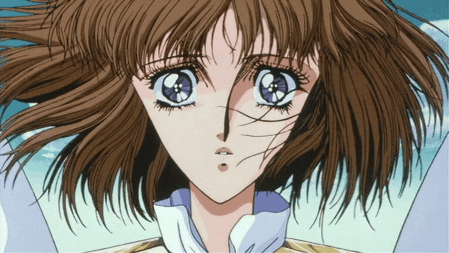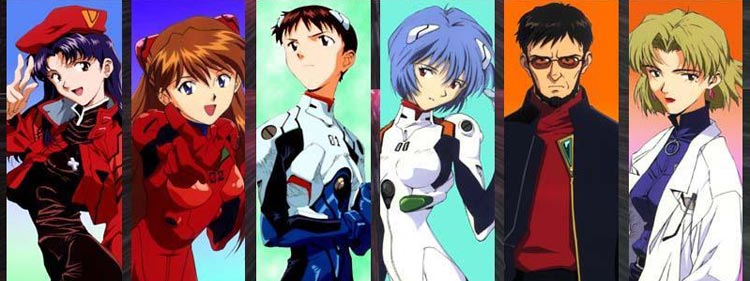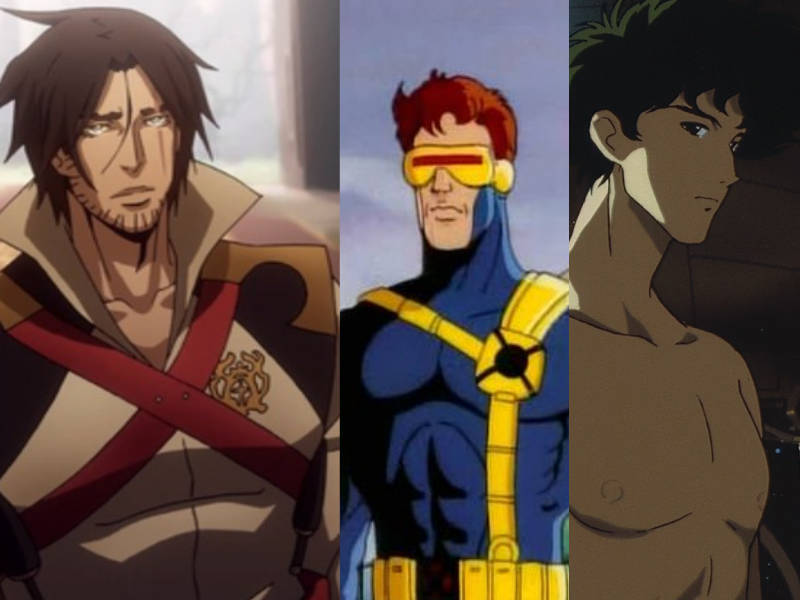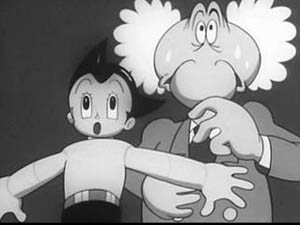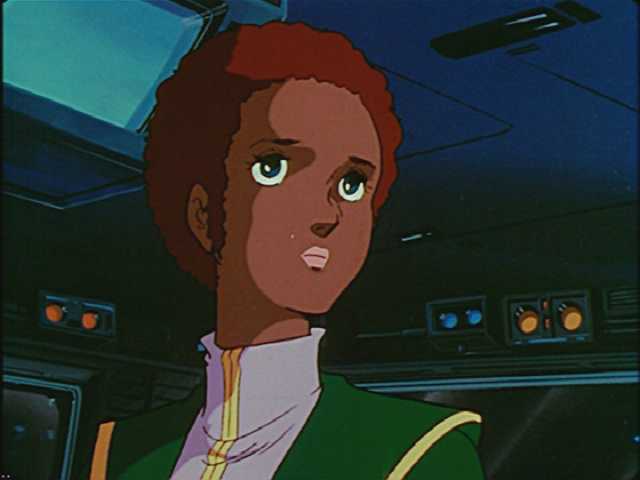Robotech is a classic mashup anime, dating well before moe became the dominate style. The anime is actually a combination of several anime spliced into a single story. This was fairly common in American anime releases back in the day. Robotech comes from an era when television anime had a more limited budget and fewer digital tools to streamline and reduce production costs. So to save money and speed production, animators used many techniques.
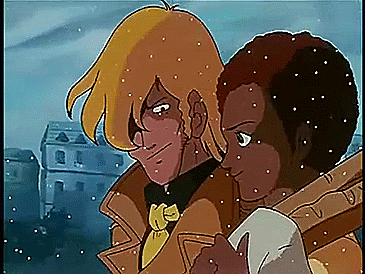
For example, this walking animation consists of a few 3-frame cycles that repeat. The use of drifting white dots for snow and some slight variation of shadows, lends more variety to the cycle than the 3 frames would suggest. Here are the frames:

Let’s first look at how the characters move. The movement is subtle so look closely. First, the characters move down and to the left for a frame to foreshadow the upward left motion that follows in frame 3. Frame 4 returns to frame 0’s position and the cycle drifts to frame 3, 2, 1, and back to 0. The cycle involves only 3 different drawings with post-process shadows and snow added to create the illusion of walking. The forward motion is generated by moving the background layer and moving the snow from the left side of the camera to the right as the frames cycle.There’s some hair motion to suggest movement, but if the wind was blowing as fast as the snow movement shows, the hair would require more frames of motion and resistance to motion to be more believable. As the animation stands, the hair is noticeably stiff.

Next we see a jumpcut followed with a 6-frame animation of a head turn with eyes closing and a smile. But only 4 of the frames have movement. In many modern animations, you will often see a frame repeated a few times to lengthen or slow the movement. The head will turn slightly in a frame, then in the following frame the eyes would start to close. On frame 3, the mouth would move. Depending on the speed of movement, you will sometimes see a holding frame before the next major movement happens. But here, to save frames and thus money, all the different elements are combined into a single frame of movement. This technique has the advantage of having more immediate motion, but it lacks subtlety of expression. Notice how the snow moves from right to left. This is because of the shift in camera angle. It replicates what a real camera would’ve seen if it moved from watching the couple to the guy’s point of view. While Robotech’s animation may seem primitive to modern anime watchers, it isn’t. It’s just limited by budget compared to modern anime.
“Hand Off” Scene
Let’s look at what I call a hand-off scene. A hand-off scene happens when a character animates while the other characters in a frame stand still. Then when another character’s turn for dialogue or action comes up, they animate and the original character freezes. Sometimes, the character will look at the next to speak, pulling the audience’s attention to the character. Directing the audience’s attention in this way helps minimize them noticing the animation freeze. But you don’t see this hand-off in focus as often in modern anime. Most of the time supporting cast still move in some way, often doing some other activity. This lends realism and offers more time for character development, but again this requires more time and effort to do. The hand-off has the advantage of keeping the audience focused on the scene’s acting character without being distracted by the background cast. I’ve often been distracted by the antics of background characters, which is fun of itself.

The hand-off is better watched in real time than broken down by frames. Watch how Rick (guy in the foreground) moves while Minmei remains still in the background. Once he looks at her, drawing the audience’s attention to her, his frames overlap a little with Minmei’s animation before he freezes. This is an overt hand-off of the audience’s attention. We naturally follow where characters look. The hand-off isn’t always so overt as it is here. Both character animations are a bit stiff, but they are charming, especially Minmei’s. If you look the bow on her collar, the loops remain fixed. With more frames, the animators could’ve added some bounce to them. Notice, however, the bounce in the strand of hair silhouetted against the ground on the left side of the frame. It’s not that the animators couldn’t animate such bounce. They just had a limited budget of time.
Watch the subtle lines around Minmei’s belt. Notice how the movement of the lines suggests her dress puffs a bit as she bends because of the tension of her belt? Likewise watch Rick’s shirt. Notice how tight it is thanks to the shift of detail lines on his chest? Robotech’s animation isn’t primitive.
Many anime fans struggle to watch older shows like Robotech. Compared to modern anime, the older animation style is more limited and, at first look, more primitive. But if you look closer, you can see sophistication within the limitations of budget, time, and technology. Modern digital coloring, tweening, and other computer-aided animation techniques allow animators to do more, even with hand-drawn frames. That’s why you see a lot more going on within a single scene and less overt hand-offs. Older animations offer little flourishes if you look closely–Minmei’s waist puff, for example. A few well-placed lines can do a lot. Anime’s minimalism means a line animated poorly can shift how a character reads or make a scene look off.
Robotech is stiffly animated across most of its scenes, but when its animators are given a chance to lavish frames, they can:
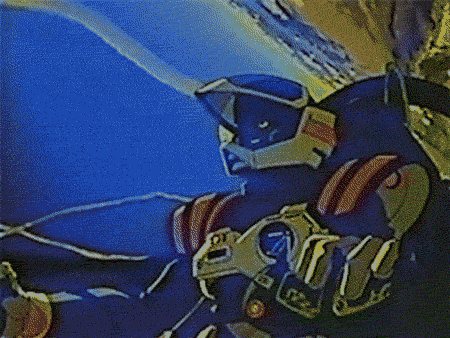
There’s a lot going on in this scene with the layering and post processing. Watch that light refract across the cockpit and helmet!
Now its fine if you can’t watch older anime or if you can’t watch modern anime, but there are fewer differences in animation technique than a first glance suggests. It really comes down to budget and time constraints. Modern anime has many tools to fit more frames into a tight budget, tools that didn’t exist (or were in their infancy) when anime like Robotech were made.
